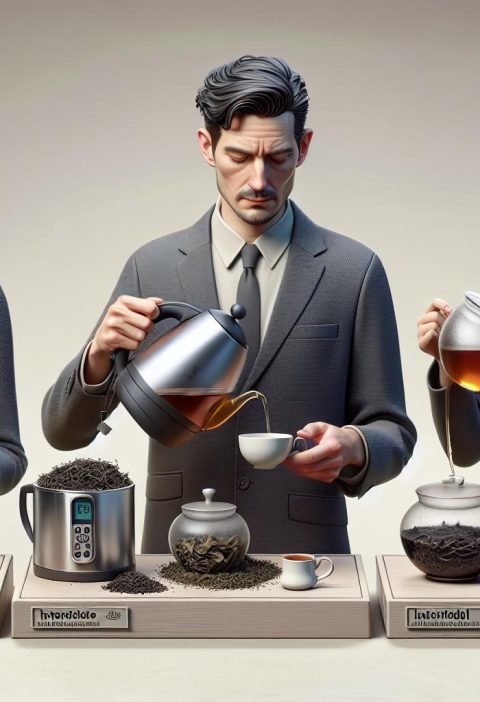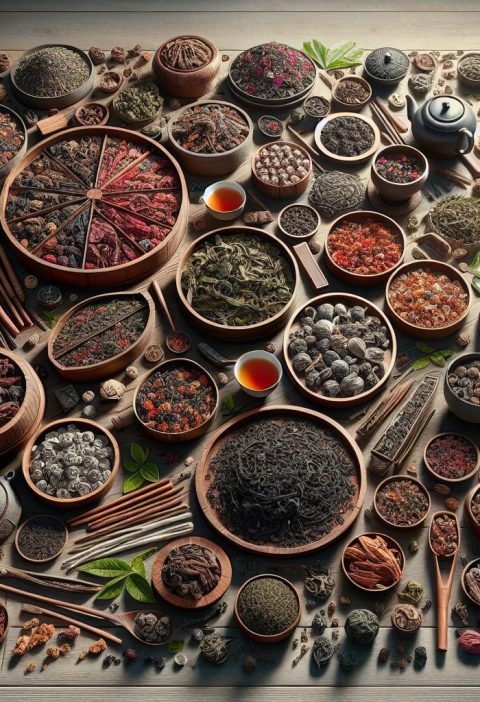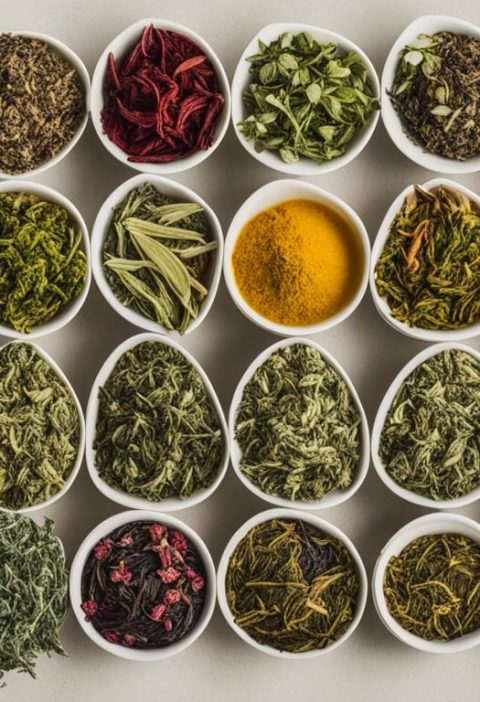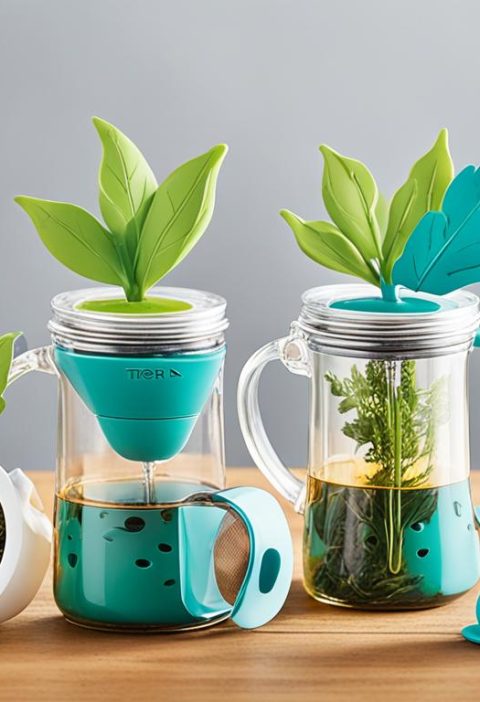Embarking on the journey of exploring aromatic loose teas is a delightful experience that opens up a world of flavors and aromas. As beginners, we are introduced to a diverse range of loose teas, each offering a unique sensory adventure. From floral notes to earthy undertones, the world of aromatic loose teas is as vast as it is captivating.
In our quest to delve into the realm of aromatic loose teas, we are guided by the allure of fragrant blends that tantalize our senses and soothe our souls. With a plethora of options to choose from, we are on the brink of discovering the perfect cup that resonates with our individual preferences. Let’s unravel the secrets of brewing the perfect cup of aromatic loose tea and embark on a journey of sensory delight.
Exploring Different Types of Aromatic Loose Teas
When it comes to aromatic loose teas, the variety can be overwhelming for beginners. Let’s delve into the world of aromatic loose teas and explore the diverse range of options available:
For Beginners: Getting Started with the Basics
- Start with classic options like Green Tea for a gentle introduction.
- Explore Black Teas for a richer flavor profile with caffeine.
- Begin with Herbal Infusions like chamomile or peppermint for caffeine-free options.
For Intermediate Tea Enthusiasts: Enhancing Your Tea Experience
- Dive into Oolong Teas for a balance between green and black teas.
- Experiment with White Teas known for their delicate and subtle taste.
- Try Floral Blends like jasmine or rose for a fragrant twist to your tea collection.
- Explore Pu-erh Teas for a complex and aged flavor profile.
- Sample Blooming Teas that unfurl into mesmerizing shapes when brewed.
- Consider Smoke-Dried Teas for a smoky and distinct taste experience.
Venture into the world of aromatic loose teas and let your senses guide you through a delightful journey of flavors and aromas.
Understanding Flavor Profiles: From Floral to Earthy

For Beginners: Mastering the Basics:
- Floral Teas: Try Jasmine Green Tea for a delicate floral taste.
- Fruity Blends: Explore Berry Infusions for a sweet and tangy experience.
- Earthy Notes: Sample Chamomile Herbal Tea for a soothing, earthy flavor.
For Intermediate Tea Enthusiasts: Enhancing Your Palate
- Complexity in Oolong Teas: Delve into Tie Guan Yin oolong for floral and creamy undertones.
- Subtle Sweetness of White Teas: Experience Silver Needle White Tea for a delicate and light flavor.
- Richness of Pu-erh Teas: Savor the Aged Pu-erh for deep, earthy notes and smooth finish.
- Blooming Teas: Enjoy the visual and taste experience of Jasmine Lily Blooming Tea.
- Smoke-Dried Teas: Dive into Lapsang Souchong for a bold, smoky profile.
- Pu-erh Tea Pairings: Match aged Pu-erh with dark chocolate for a decadent pairing.
| Tea Type | Flavor Profile |
|---|---|
| Green Tea | Fresh, grassy |
| Black Tea | Bold, malty |
| Herbal Infusions | Fragrant, caffeine-free |
| Oolong Tea | Floral, creamy |
| White Tea | Delicate, light |
| Pu-erh Tea | Earthy, smooth |
| Blooming Tea | Visual, aromatic |
| Smoke-Dried Tea | Bold, smoky |
Tips for Choosing the Right Aromatic Loose Tea
When it comes to selecting the perfect aromatic loose tea, there are a few key factors to consider to ensure a delightful tea-drinking experience. Whether you’re a novice tea enthusiast or on your way to becoming a tea connoisseur, these tips will help you make informed choices when exploring the world of aromatic loose teas.
For Beginners: Mastering the Basics
- Start with Familiar Flavors: Begin your tea journey with floral teas like Jasmine Green Tea or fruity blends such as Berry Infusions for a gentle introduction to aromatic loose teas.
- Explore Variety Packs: Opt for sampler sets or variety packs to try out different flavors and discover your preferences.
- Consider Caffeine Levels: If you’re sensitive to caffeine, choose herbal teas like Chamomile, which are caffeine-free and perfect for unwinding in the evening.
- Pay Attention to Brewing Guidelines: Follow the brewing instructions on the packaging to extract the best flavors from your aromatic loose tea.
For Intermediate Tea Enthusiasts: Enhancing Your Palate
- Experiment with Oolong Teas: Delve into the world of Oolong teas like Tie Guan Yin, known for their complex flavor profiles that sit between green and black teas.
- Try Subtle White Teas: Explore the subtle sweetness of White Teas such as Silver Needle, which offer delicate and nuanced flavors for a refined tea experience.
- Discover Pu-erh Varieties: Venture into the realm of Pu-erh teas such as Aged Pu-erh, which offer deep, earthy flavors and improve with age.
- Invest in Quality: Consider investing in higher quality loose teas for a more nuanced and satisfying tea-drinking experience.
- Blend Your Own Teas: Take your tea expertise to the next level by experimenting with blending different teas to create unique flavor profiles.
- Pair Tea with Food: Explore the art of pairing aromatic loose teas with various foods to enhance both the tea and culinary experience.
- Understand Tea Terroir: Dive deeper into the world of tea by exploring the concept of “terroir” and how it influences the flavors of your favorite aromatic loose teas.
- Engage with the Tea Community: Join tea tasting events, workshops, or online forums to
Brewing Techniques for Aromatic Loose Teas
When it comes to brewing aromatic loose teas, the right techniques can make all the difference in enhancing the flavors and aromas. Whether you’re a beginner, intermediate, or an expert tea enthusiast, mastering brewing techniques is crucial for a perfect cup of tea.
For Beginners: Getting Started
- Water Temperature: Use the appropriate temperature for different types of tea (e.g., green tea, black tea, herbal tea).
- Steeping Time: Follow steeping guidelines to avoid a bitter taste or over-extraction.
- Tea-to-Water Ratio: Maintain the right balance to achieve the desired strength of flavor.
- Use Quality Tools: Invest in a good infuser or teapot for an even extraction.
For Intermediate Tea Enthusiasts: Refining Your Brew
- Experiment with Steeping Methods: Try techniques like Gongfu brewing for a more intense flavor profile.
- Multiple Infusions: Certain teas can be steeped multiple times, unlocking different flavor notes with each brew.
- Play with Cold Brewing: Explore cold brewing methods for a refreshing twist on your favorite aromatic teas.
- Explore Tea Blends: Mix different teas to create unique flavor combinations that suit your taste preferences.
- Tea Ceremony: Dive into the art of traditional tea ceremonies for a holistic tea-drinking experience.
- Aging Teas: Discover the complexities of aged teas and how they develop unique flavors over time.
- Tea Pairing: Pair teas with foods to create complementary taste profiles that elevate both the tea and the dish.
- Customize Brew Parameters: Adjust brewing parameters like water quality, brewing vessel, and infusion time for precise control over flavor extraction.
| Key Point | Details |
|---|---|
| Water Temperature | Varies for different tea types (e.g., 175°F for green tea, 200°F for black tea) |
| Steeping Time | Ranges from 1-5 minutes depending on the type of tea |
| Tea-to-Water Ratio | Typically 1 teaspoon of tea per 8 ounces of water |
| Quality Tools | Ensure a consistent and enjoyable brewing experience |
Savoring the Experience: Enjoying Your Perfect Cup of Aromatic Loose Tea

For Beginners: Mastering the Basics
- Start by selecting high-quality loose tea that suits your taste preferences.
- Heat water to the recommended temperature based on the type of tea (e.g., green tea at 175°F).
- Use a good-quality infuser or tea filter to steep the tea leaves properly.
- Experiment with different steeping times to find the perfect strength for your palate.
- Remember the golden rule: One teaspoon of tea for every 8 ounces of water is a good starting point.
For Intermediate Tea Enthusiasts: Enhancing Your Brew
- Explore multiple infusions to extract different flavor profiles from the same tea leaves.
- Try cold brewing for a refreshing and less astringent tea experience.
- Consider blending teas to create unique flavor combinations.
- Delve into the art of tea ceremonies for a mindful and immersive tea-drinking experience.
- Dive into the world of aging teas to discover complex and nuanced flavors.
- Pair different teas with specific foods to create harmonious flavor combinations.
- Customize your brew parameters by adjusting water temperature, steeping time, and tea-to-water ratios for precise flavor extraction.
- Elevate your tea experience by investing in specialty teaware like gaiwans, Yixing teapots, or kyusu for authentic brewing methods.
| Water Temperature for Various Teas | Steeping Time | Tea-to-Water Ratio |
|---|---|---|
| Green Tea: 175°F | White Tea: 185°F | 1 tsp tea : 8 oz water |
| Black Tea: 205°F | Oolong Tea: 195°F | |
| Herbal Tea: 212°F | Pu-erh Tea: 212°F |
Conclusion
We’ve explored the world of aromatic loose teas, uncovering the secrets to a perfect brew for both beginners and seasoned tea lovers. From selecting premium teas to mastering steeping techniques, there’s a whole spectrum of flavors waiting to be discovered. Whether you’re just starting your tea journey or looking to elevate your tea game, the possibilities are endless. Remember, tea brewing is an art that evolves with each cup, so don’t be afraid to experiment and find your unique blend of flavors. Embrace the ritual of tea brewing and let each sip transport you to a world of tranquility and delight. Cheers to endless tea discoveries and the joy of sharing a cup with loved ones.






